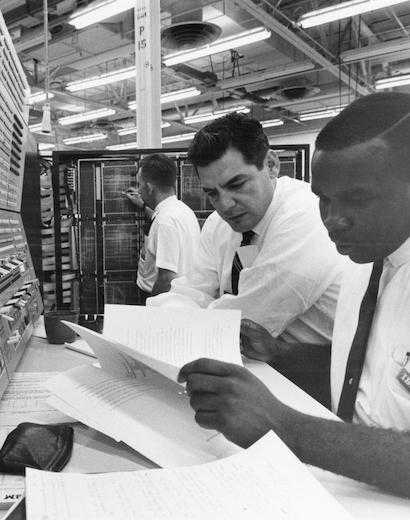Mainframes running COBOL, a programming language conceived long before JIRA boards and javascript roamed the earth, make up a good portion of the country’s critical systems. During the COVID-19 pandemic, these are the systems we’re relying on to ensure that vital stimulus payments make it to people and businesses in need. Yet, there’s a shortage of programmers who know how to code in COBOL.
Why Is COBOL Still Around?
Over the last 50 years, COBOL programmers have been pulled out of retirement during times of crisis to ensure that essential computer systems don’t shut down when the country needs them most. Hordes of COBOL coders returned to the workforce during Y2K to ensure that the country’s dated systems wouldn’t rupture as their internal clocks switched over to the new millennium.
As it turns out, most core banking systems still run a programming language invented before the personal computer. According to Reuters, 95% of all ATM swipes still rely on COBOL. At least 12 states use it to process unemployment—sobering news at a time when the labor department reported 16.8 million new unemployment claims filed between March 15th and April 4th.
While a new breed of engineers lament legacy infrastructure, these systems quietly hum along, just like they have for over 60 years.
How is it that a language that’s consistently delivered for six decades can just go out of style?
The Talent Shortage
In 2017, Reuters reported on a company run by Bill Hinshaw, 75 years old at the time, called COBOL Cowboys, a network of veteran COBOL programmers for hire. His team, mostly people reaching retirement and a few people in their 40s and 50s—lovingly called the “youngsters”—are the few remaining people with industry experience.
Everyone else—trained to build from the ground up, carefully documenting their architecture—seems to be waiting for some savior solution to save us from a legacy language.
The Problem Isn’t COBOL—It’s Overloaded Servers
The truth is: there is nothing intrinsically flawed with COBOL. Yes, some systems are built upon code that someone wrote decades ago, without the testing or documentation tools we have now. Their workarounds and patches seem confusing today, and they’re no longer around to explain things to us.
Today, those aging systems are taking 50x the traffic they were when they were built, and the real problem is finding someone willing to learn COBOL to make critical updates
Learning to Coexist
At Kunai, we take a pragmatic approach to technology decisions. Our clients’ business problems come before our desire to embrace new technology. There is simply no way to build the future of finance without understanding the technologies of the past. This is why our team has a deep understanding of both legacy systems and modern programming tools.
So whether it’s integrating legacy systems, deploying to the cloud, or both, we’ll figure out a solution that best suits you—and the crazy times we’re living in.
Need help building something?
